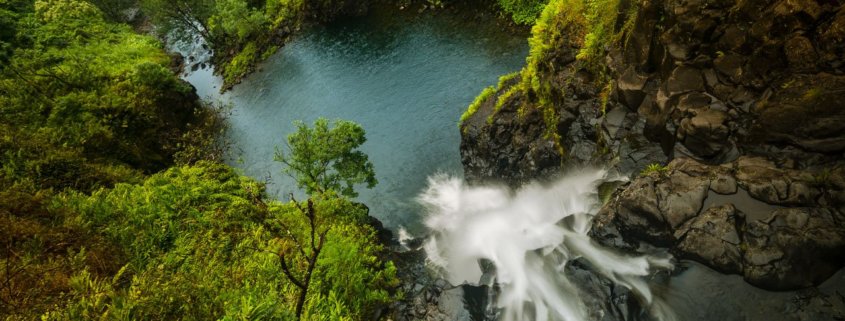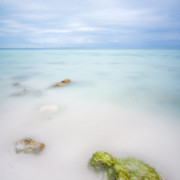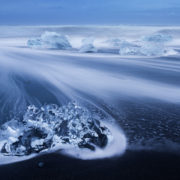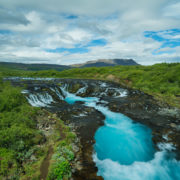Why do Photography Filters have Different Shapes?
If you are just starting to think about getting photography filters, the process can be confusing due to the many options that are available in the market today. One of the main sources of that confusion is their varying shapes of photography filters.
One would imagine that since photography filters are used by landscapes photographers to modify light they would all have similar shapes. But this is not the case. Photography filters can be round, square or rectangle depending on their function. Image below show some of the different photography filters and the accessories that go with them.

Difference types of photography filters and accessories – 1. Step-up rings 2. Filter holder and adapter 3. Circular Polarizer Filter 4. Graduated Neutral Density Filters 5. Neutral Density Filters.
So the question is – Why are some photography filters round, and others square or even rectangular? There’s a very good reason for each of those shapes.
Round Photography Filters
Round photography filters are the obvious choice because they can screw onto your round lenses. It’s a convenient shape that makes sense in many cases – but not always. UV or Haze filters fit neatly over your existing lens, and some photographers use them to protect their expensive glass. In old days nature photographers used to carry a collection of round colored photography filters, too – but those are no longer necessary, since their effect is easy to replicate in post processing.
Circular Polarizer (CP or CPol or CPL) filters are also round. That’s because they need to rotate smoothly in order to work properly. A circular polarizer filter cuts through glare to show better color and detail – and it reduces the amount of light coming through the camera lens by about one to two f-stops at full effect. We often use our Benro circular polarizer filters when we’re photographing wet leaves or rocks, and when we’re shooting water and want to see beneath the surface.
I know I’ll get called out on social media if I don’t mention Variable Neutral Density photography filters. ;) These handy little filters are made up of two Polarizer filters stacked on top of one another. They allow you to reduce the amount of light coming through your lens up to about 10 f-stops – depending on how you adjust the rings. Like a circular polarizer, a VariND filter is always round, since it needs to rotate in order to work properly.
You can purchase round Neutral Density (ND) filters and Graduated Neutral Density (GND or ND Grad) filters as well… but there’s good reason to consider square and rectangular photography filters instead. Here’s why.
Rectangular Filters
Rectangular photography filters are rectangular for a reason – they are designed to slide up and down in their holders. The most common of these is a Graduated Neutral Density (GND or ND Grad) filter. You’ll need an adapter and holder to use a rectangular filter, but the added flexibility makes it more than worth the cost.

A soft graduated neutral density filter reduces the amount of light coming through the darker side of the filter.
A GND filter is designed to reduce the amount of light coming through part of the lens. These filters are great for landscape photographers because they allow us to photograph sky and foreground with a single exposure, even if the range of light is pretty broad. A 2 f-stop GND filter will reduce the amount of light coming through half the lens by 2 full stops – so I can cover the sky in my photography composition with the dark part of the filter. The landscape in the foreground will remain unaffected.
Once I’ve set up my composition, I attach my adapter and holder, and slide my GND filter into place. I can slide my GND filter up and down until the transition between the dark and light part of the filter aligns with the horizon in my photo. If you are using a round GND filter, you can rotate the filter to adjust for an uneven horizon, but you can’t slide it up and down – so you are limited to a centered horizon in your photography composition. That’s a limitation I’m not willing to settle for.
I used a soft GND filter to reduce the amount of light coming through the top of the lens, so I could capture the scene below without blown highlights or blocked shadows.

Landscape photography using soft GND filter – Grand Prismatic Hot Springs – Yellowstone National Park – Wyoming
I carry five Benro GND filters when I’m on location. Three “soft” GND filters, which provide a gradual transition between their dark and light halves – and two “hard” GND filters, which provide a less-gradual transition. These GND photography filters reduce the light coming through part of the filter by differing amounts – between 2 and 4 stops. I can stack multiple GND filters in my Benro holder if necessary.
Square Photography Filters
So, round and rectangular filters make perfect sense… but why would you need a square photography filter? I carry three Benro Neutral Density (ND) filters with me wherever I’m shooting… and you guessed it… mine are square.
There’s no need to rotate or adjust an ND filter. It’s designed to reduce the amount of light coming through your lens. When I’m shooting waves on the beach, I love to use ND filters to slow down the shutter speed. I can use a slow shutter speed to blur the motion of the waves for a silky effect. ND filters come in handy when we’re shooting waterfalls too. Jay used a 3-stop ND filter to reduce the amount of light hitting the sensor for this photo from Maui, Hawaii. Less light meant that he could use a long exposure to capture the smooth movement water as it went over the cliff.
The square shape allows my ND filters to fit into the same filter holder I use for my rectangular GND filters, so I can stack different photography filters to my heart’s content. A round GND filter would work just as well, but it’s much more convenient to slide GND filters in and out of the holder as necessary, rather than removing it to attach or remove round filters to the camera lens, and then replace it again. My Benro filter holder even lets me adjust my Circular Polarizer filter without removing the whole setup.

Jay stacked ND and GND filters in his filter holder while shooting on a beach in Iceland.
When you are working with photography filters, keep in mind that vignetting can be a real problem. You don’t want to be able to see your filters through the camera lens. They should be wide enough that their edges rest outside the viewing area of your widest lens. Check the corners of your landscape photography compositions to be sure you are using the right size filters and filter holders. I use a step-up adapter ring so I can use larger filters (100mm ND and GND filters), which remain out of sight even when I’m shooting at 16mm.
Photography filters are great additions to your kit, and can make a real difference to your landscape photography. Take the time to understand how they’re used, and experiment with them until you feel comfortable using them. I won’t travel without mine!














